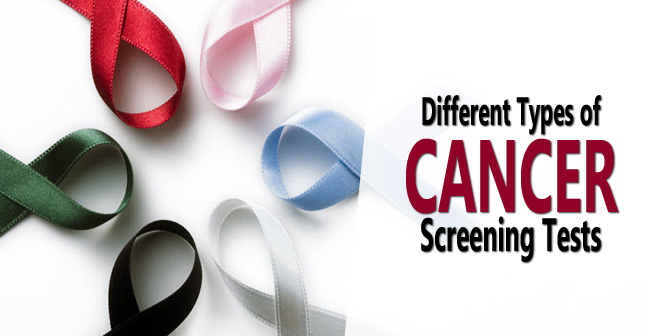

The checking of cancer cells in a person’s body who is not experiencing any symptom is known as cancer screening. That means go for the screening test to find the cancer cells even before the display of signs and symptoms. There are different types of screening tests from which the doctor will opt the test for you depending on the health, family history, age, habits, and expected cancer type. Through these screening tests, the doctors can diagnose cancer at the early stage.
The early stage diagnosis of cancer through screening will help in treating cancer at the right stage. The primary aim of doctors through cancer screening tests are:
- Reduce the death rate of cancer.
- Diagnose and remove cancer cells before they start to grow.
- Keeps a check on the patient’s health.
Read the complete article to know in detail about Cancer Screening, Cancer Screening Tests, Cancer Screening Risk, etc.
Cancer Screening
- There are different screening tests for different cancer types.
- Some of the cancer screening tests can cause problems to the patient. Therefore, always ask about the possible side effects or risk factors associated with the screening tests.
- There is a possibility of both false positive and false negative screening test results. This means the cancer screening might not be correct always.
- The most significant advantage of Cancer screening is that the patient can live a long and healthy life if cancer gets diagnosed at an early stage.
Types of Cancer Screening Tests
There are different types of cancer screening tests which are handy in both diagnosing and reducing the death rate from the disease. The kinds of Cancer Screening tests for different types of cancer are as follows:
- Mammography: Mammography is a kind of x-ray which is specially designed to check and view the health of Breast. Through Mammography, Doctors can check the changes, tumor, and irregularities taking place in the breast. The images which are produced in mammography are called mammograms.
- Clinical Breast Examination: Through Clinical breast examination, the changes taking place on the skin of breast and nipples can be checked.
- Breast Self Examination: This is a type of screening test in which the lady patient examines and experiences the changes taking place in her breasts.
- Magnetic Resonance Imaging (MRI): This is not a frequent screening test but a helpful one for those who are at the high risk of breast cancer.
- Human Papillomavirus (HPV) Testing: In order to conduct the HPV Testing, cells from outside of a woman’s cervix scrapped and is tested to check the presence of some specific HPV strains. In the higher risk patients, the HPV Test is combined with Pap Test for better screening.
- Pap Test: In the Pap Test, the cell from the outside of women’s cervix is taken which is later checked by the pathologist.
- Low-Dose Helical or Spiral Computed Tomography (CT) Scan: The Low-dose helical or spiral computed tomography (CT) scan will create a three-dimensional image of the internal organs of the body. A number of x-rays will be taken from different angles which will be later combined through a computer to show a detailed image of internal organs, especially lungs.
Skin Cancer
- Complete Skin Examination: In this screening test, the whole skin will be examined to check the presence of skin cancer cells, if any.
- Dermoscopy: Through Dermoscopy, cancer can get detected at the very early stage. In Dermoscopy, doctors use a handheld device to check the size, shape, and pigmentation patterns of skin lesions.
Prostate Cancer
- Digital Rectal Examination (DRE): In DRE, doctors inserts a gloved lubricated finger into the rectum of men to find any regularities on the surface of the prostate.
- Prostate Specific Antigen (PSA) Test: The higher the PSA level, the lower the chances of cancer.
Colorectal Cancer
- Colonoscopy: A flexible, lighted tube called a colonoscope is inserted into the rectum, and through this Colonoscope, the presence of cancer cells in Colon is checked.
- Sigmoidoscopy: When the doctors want to check the lower part of the colon, they use Sigmoidoscopy. A flexible, lighted tube called a sigmoidoscope is used to do so.
- Fecal Occult Blood Test (FOBT): Fecal Occult Blood Test is done to check the presence of cancer in feces or stool. FOBT is of two types:
- Guaiac
- Immunochemical
- Double Contrast Barium Enema: This is an alternative test for those who cannot have a colonoscopy.
These are the different Cancer Screening Test for different types of cancer. Doctors will use this as according to the health and symptoms experienced by the doctors. Age and family history are also the factors which would influence the screening test. To know in detail about the screening tests and for the best screening test, you should visit Candrol. Book an appointment now by filling the contact form.
Leave a reply





Leave a reply